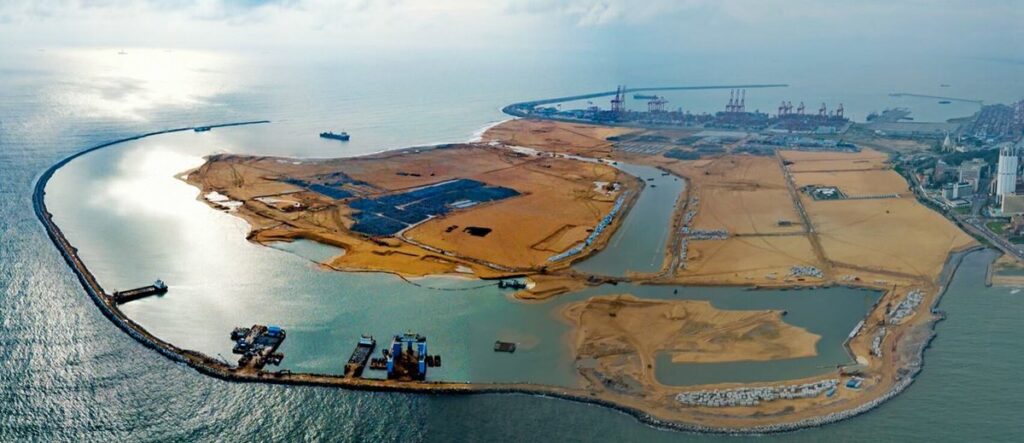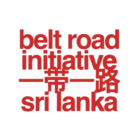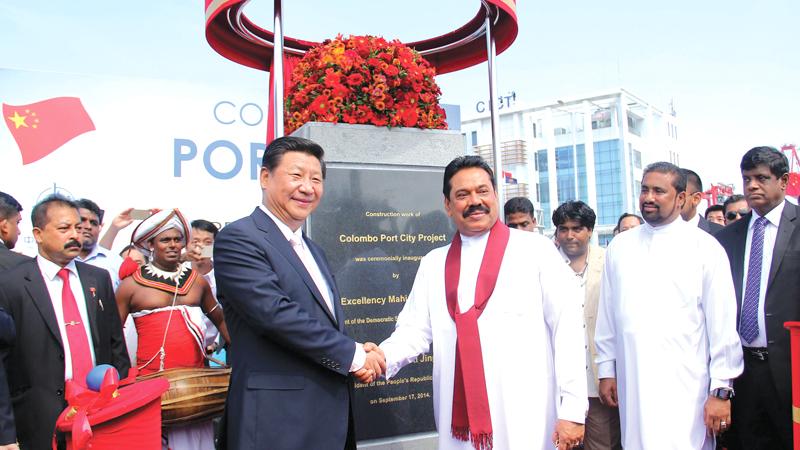The Colombo Port City, What to Expect?
The Re-Emerging of An Ancient Maritime Trading Hub Along the Maritime Silk Road.
All throughout written and verbal history, Sri Lanka was known as an important trading hub due to its location, and especially during the era of the ancient Maritime Silk Road, Sri Lanka was a notable transit point. The ancient Mahathiththa Port which is located close to the northern district of Mannar in Sri Lanka was considered a center of the Maritime Silk Road that transported Silk from China to Europe. The Port and the surrounding city functioned as the main Port City throughout Sri Lanka’s Anuradhapura Kingdom, and between 10th to 11th C.E many highway links were connected between the Mahathiththa Port City in Sri Lanka and different cities including the Chola kingdom in India.
The international trade relations continued during the reign of great Sri Lankan King Parakramabahu I (1153-1186 AD), and established a special economic department name “Antharanga dura” to coordinate foreign trade and to maintain the supply of highly demanded products for international buyers. The history books identify the Antharanga dura as an ancient special economic zone that exported and processed many valuable resources from timber, gems, and spices. It’s said that the Antharanga dura was located in different areas in Sri Lanka along Kalu River, Benthara River, and Sinharaja.
Sri Lanka was also an important trading partner with the ancient roman empires, and during the era many trading cities, maritime links, and land-based corridors were functional for trading elephants, gems, pearls, silk, clay pottery, and, particularly spices were exported to Rome in exchange for Rome Currency. It is said that ancient Sri Lanka had strong trade relations with Rome throughout, and ancient Roman coins found in different regions in Sri Lanka including Sigiriya, Mihinthale, Anuradhapura, Mahathiththa, Walachchena, and Kandarodai are indispensable evidence of how Sri Lanka operated as a trading hub during different eras.
Sri Lankan history books also mention prosperous relations with Egypt and during 1272- 1284 A.D King Buwanekabahu I of Yapahuwa had direct correspondence with the Sultan of Egypt to manage trade activities. Arab Muslim history documents highlight that in the 11th century Sri Lanka was a major trading partner and was popular for building giant ships which treaded with Oman and Yemen during different reigns.
Historians in China also mention Sri Lanka as an important trading hub during different eras and emphasize massive Sri Lankan ships over 200 feet which could accommodate 700-800 sailors active in international trade. Chinese history records that Sri Lanka is an important hub on Maritime Silk Road. The most notable event was the arrival of Admiral Zhen He’s treasure ships to Sri Lankan ports in the 15th century Ming Dynasty during the Yongle empire era. On each voyage, Admiral Zheng He was acting as the envoy and commercial representative of the Ming court in China. In Early modern Sri Lanka from the 15th century to the 20th century, during the Portuguese Ceylon, Dutch Ceylon, and British Ceylon periods, Sri Lanka operated a few Port Cities and during the latter part, many infrastructures were built to support the supply chains reaching the Sri Lankan Ports and trade caters.
So, evidently, Sri Lanka developed as a vital trading point during all major eras, and at the current state of the world where China is the world’s main trading partner for over 120 nations, with having the world’s second-largest and fastest growing economy, upcoming Colombo Port City could pulse a revolutionary imprint in Sri Lanka and the region as a major Special Economic Trading Zone in the Indian subcontinent.

The Port City Colombo a Modern-day Mega Trading Arena.
The Port City Colombo is the biggest development project in Sri Lanka which aims to be a modern-day global trading arena. The city is directly connected by air to over hardened and fifty destinations and positions within a five-hour flight radius to South Asia, South East Asia, the Middle East, and the African continent. The upcoming mega city is situated next to Colombo Port which ranks within the globally top twenty busiest ports annually attaching all major shipping lines and related industries. The unique development model of the Port City Colombo focuses on the green city concept and attracts state-of-the-art infrastructure development systems, which also gives birth to the county’s first-ever Special Economic Zone and rebrands Colombo as the regional services hub and a gateway to South Asia.
Mrs. Dhanya Gunawardana, who heads the Port City Colombo Economic Commission cooperate communications said that the project management team is emphasizing on attracting global giants in IT, financial services, logistics, banking, and all other needed support services that can transform the city into an all-inclusive work-live-play model. She also added that the Colombo Port City Economic Commission is currently drafting the most vital regulations and procedures according to the Colombo Port City Economic Commission Act and a new holistic website for the commission will be launched by the end of the year. The Port City Economic Commission, together with CHEC Port City would create an eminent combination to transfer the required ‘Know-How’ from similar model cities as Shenzhen, China in an era of the Belt & Road Initiative. The Port City Colombo will highlight the benefits of China’s Belt & Road Initiative which is identified as a strategic trade development model of China’s central government. The Belt & Road Initiative with a network of over 140 countries and an average of over USD 10 trillion in trade between the member states would be the key framework for China’s future trade development and the Port City Colombo would gain the utmost priority. Port City Colombo with the special legal and special economic policies is aiming to provide the most stable environment for investors which includes a fast and single process in getting things done and according to the ratings Port City Colombo positions at 70% to 80% lower cost in doing business in comparison with other major business hubs which gives the competitive edge in attracting investments. The island nation also provides access to key markets with strategic Free Trade Agreements with India, Pakistan, and Singapore and is under negotiations for Free Trade Agreements with China and Bangladesh, which will be a key factor for regional companies to be established in Colombo. The project also can build momentum through fast-growing Indian and Chinese trade in Sri Lanka which could also be an extended part of the Chennai Connect Initiative and Belt & Road Initiative trade corridors. Moreover, India’s real estate markets will reach US$1 trillion by 2030 with an annual growth of 15% according to the RBSA advisors survey, which will give a prominent boost to the regional real estate markets, especially in Colombo Port City.
The Colombo Port City will be an extended challenge for Sri Lanka situated in between Asia’s fastest growing economies to learn from other similar cities. In the past, China utilized Macau, Hainan, Shenzhen, and Hong Kong to become thriving economies, besides other cities such as Kobe in Japan, Putrajaya in Malaysia, the King’s beach in Australia, the new Marina Bay city in Singapore, and Thailand’s expanded city of Bangkok are good examples for the upcoming Colombo Port City. Moreover, the upcoming NEOM city in Saudi Arabia aims to invest around USD 1 trillion in a brand-new modern city in Tabuk Province in north-western Saudi Arabia will build more momentum toward the Colombo Port City. Sri Lanka with the highest literacy rates in the region, the skilled labor forces, and the country’s high-end brane power was flown into the Middle East to support its thriving economy in the early nineties and the Colombo Port City development would be a good alternative model to attract the lost Sri Lankan brain drain.
Apart from that, the construction phase of the Colombo Port City will increase the demand for construction materials from steel, rebar, cement, sand, rocks, etc, which will boost the cash flow of local suppliers. Moreover, other commodities from paint, floor tiles, washroom equipment, and furniture from door locks to glass will be sourced from the Sri Lankan market. The report by PwC, emphasizes that around 200,000 expats moving into the new build city, which will also drive a big demand for services from salons, schools, gyms, food shops, and support services to cater to the needs of the high-end skill jobs. The Colombo suburbs will boost its real estate markets by relocating workforces to support the growing demands for services and products.
What to expect from Colombo Port City?
Although the Colombo Port City was losing its momentum since the COVID followed by the economic crisis in Sri Lanka, the strategic importance of the project is still vital in a changing geopolitical fabric. The project is not only viewed as an investment prospect but also the geopolitical importance can’t be disregarded. The development of another extended world order along upcoming frameworks under the BRICS and Shanghai Cooperation Organization, the Belt & Road Initiative, and the Global Development Initiative will allow more capital to be flown into the developing nations. In the last few months, Sri Lanka was halted due to the economic collapse and social unrest, however, the country was getting more stable since the appointment of new President Ranil Wickremasinghe, and the IMF program and debt restructuring will simultaneously build investor confidence in months to come. More specifically Indian, Chinese, and other real estate investors have shown interest in the upcoming Port City. The centuries-old and generational-long special relationship and trust between Sri Lanka and China is an exceptional prospect to maximize the potential of the trade relations and Sri Lanka should analyze the global flows and harness this opportunity from the Belt & Road Initiative. The Port City of Colombo which comprises six districts including an international island, a central park, an international financial city, the living island, and a marina lifestyle will enter the markets soon, below are fourteen points to look forward to at Port City Colombo:
- The construction of the Duty-Free shopping mall inside Colombo Port City is aiming to be the biggest duty-free mall in the region, which will first open as an “IKEA Style Warehouse Model” shopping mall and will move to a competitive shopping complex in the coming five years. It will also be the first Downtown Duty-Free Mall in Sri Lanka and in the region, and after completing the infrastructure work, it will soon begin the interior fit-out. The Duty-Free trading facility will be operated by two of the world’s leading Duty-Free operators and is the key feature to test waters in a quest to position Colombo as a regional shopping destination similar to Dubai, Kuala Lumpur and Singapore, etc.,
- A plan for the feasibility of a ‘remote check-in process’ and ‘checked-in baggage hauling’ for departing overseas travelers is currently being drawn up, to streamline their shopping experience at the Duty-Free Shopping mall at the Colombo Port City.
- The construction of the elevated port access road from Ingurukade Junction to the Colombo Port City would be completed by 2023, which interlinks the Airport Expressway directly to the Port City Colombo.
- The first beachfront Luxury Hotel project will be developed at the Colombo Port City on extensive land of 6 acres which is next to one of the busiest Ports in the world with easy access to the Airport.
- Colombo Port City ‘Port City Villa Development’ will reach out to potential investors to build a modern Beach Villa in Port City targeting high-end business tourists which extend toward a 26-acre land Area facing the Indian Ocean.
- The Colombo Port City Commission has granted six fresh Indenture leases for a 99-year period to the investors valued at approximately US$200 million and investors have projected a collective investment commitment of $ 600 million.
- The Colombo Port City Commission was also in talks with the Singapore International Arbitration Centre (SIAC) to set up an international commercial dispute resolution center.
- Negotiations are ongoing to introduce a leading Global Food and Beverage operator into Colombo Port City, offering a range of East, West, and Fusion cuisine, creating a ‘watering hole’ concept for Duty-Free shopping as well as a world-class dining destination in the City of Colombo.
- State of the Art multipurpose MICE facility of 78,000 sqm, which can hold international conferences, exhibitions, and other multilateral conventions in a 12.3-acre land.
- Globally reputed education brands with a capacity of accommodating over 1,500 students and hospitals of over 500 beds will enter Port City Colombo in order to cater to the investors and experts living in Colombo Port City.
- The Port City Colombo includes a 2km uninterrupted beach, open to the public with various water sports and land activities.
- The Port City will emphasize the modern ‘Work-Live-Play’ model and identify 111 acres of open space, a central park, green shade, walkways, and dedicated bicycle lines included in the development model.
- Luxury Yacht marina is already operating under ‘Sail Lanka’ yet this facility could be extended to many more internationally reputed companies that hold a capacity to berth over 200 yachts.
- New all-inclusive Holistic website for the Port City Economic Commission will be launched by the end of the year; the website will be the first tool in order to create transparent and user-friendly access to the Port City Colombo which will be a one-stop information framework.
As the Marshall Plan also known as the European Recovery Program back in 1948 when the United States transferred over US$100 billion to their ally nations to recover Western European Economies after World War II, China’s Belt & Road Initiative will be the modern-day biggest global economy recovery plan which includes over hundred and forty signatory parties including thirty-four European Nations (eighteen European Union member states), most of the Asian nations and all most all African and Latin American nations, among which are twenty-six low-income nations and thirty-nine middle-income nations, together the Belt & Road initiated over three thousand five hundred projects globally.

Author; Yasiru Ranaraja is a Researcher on Maritime Affairs and BRI Development. He Is Currently the Director at Belt and Road Initiative Sri Lanka (BRISL), An Independent and Pioneering Sri Lankan-Led Organisation, With Strong Expertise in BRI Advice and Support. E-Mail: info@brisl.org/ Twitter: @YRanaraja


